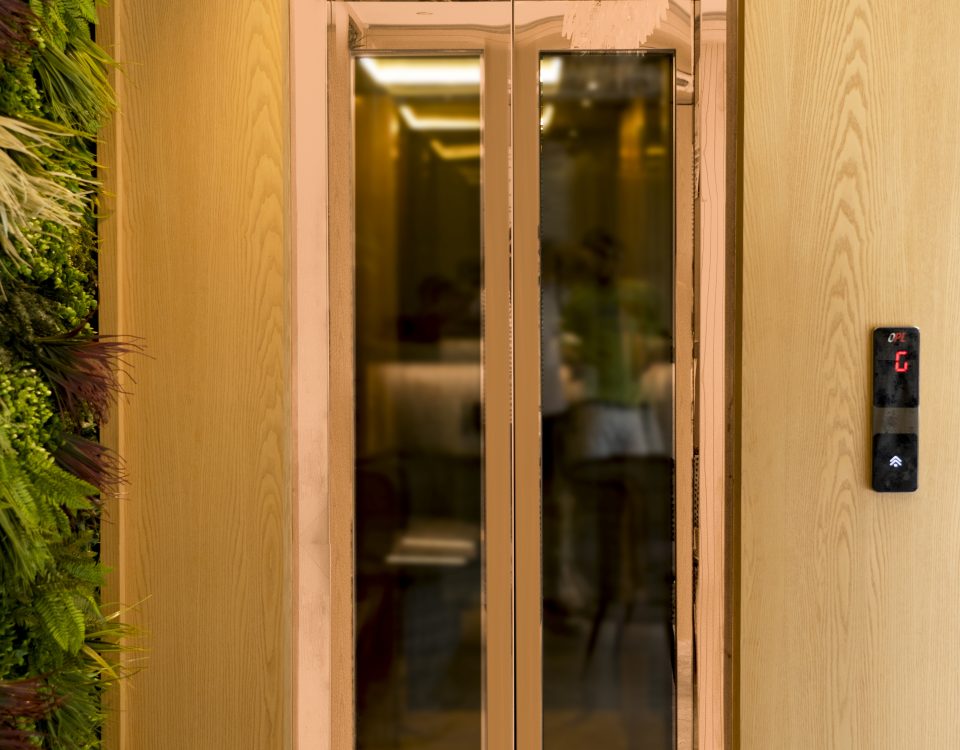
How AI and Automation are Enhancing Elevator Efficiency
March 30, 2025How Smart Elevators Enhance Security in Modern Buildings
In today’s fast-evolving urban landscape, security is a top priority for residential complexes, commercial buildings, and public spaces. With the rise of smart elevators, modern buildings are integrating advanced security features that go beyond simple vertical transportation. These intelligent systems use AI, IoT, and biometric authentication to enhance safety, prevent unauthorized access, and improve passenger experience.
1. Biometric & Access Control Integration
Smart elevators now incorporate biometric authentication, such as:
✅ Fingerprint scanning
✅ Facial recognition
✅ RFID keycards or mobile access
🔹 Example: In corporate offices, employees can use their ID badges or facial recognition to access only authorized floors, reducing security risks.
2. AI-Based Surveillance & Threat Detection
AI-powered elevators monitor and analyze passenger behavior in real time. Integrated CCTV cameras use AI to:
✅ Detect suspicious activities or unauthorized access
✅ Send instant alerts to security teams
✅ Identify loitering or unusual crowd behavior
🔹 Example: If someone blocks elevator doors intentionally or attempts forced entry, security teams receive an automatic alert.
3. Destination Control System (DCS) for Restricted Access
Destination Control Systems (DCS) optimize elevator efficiency and enhance security by:
✅ Allowing only authorized personnel to access specific floors.
✅ Preventing random floor selection, reducing unauthorized movement.
✅ Ensuring VIP or private floor access control.
🔹 Example: High-end residential buildings use DCS to allow penthouse residents to access only their private floors.
4. IoT-Enabled Real-Time Monitoring & Emergency Response
Smart elevators connect to IoT networks, allowing real-time tracking and emergency responses.
✅ Live tracking of elevator movements for security teams.
✅ Automated emergency calls in case of system failures.
✅ Remote access for shutdown or override in case of threats.
🔹 Example: If an elevator is stopped unexpectedly, building security can remotely check camera feeds and diagnose the issue before sending a technician.
5. AI-Powered Predictive Safety Features
AI-driven analytics help identify potential threats and malfunctions before they occur, ensuring:
✅ Automatic detection of mechanical issues before breakdowns.
✅ Emergency braking activation in case of free fall.
✅ Fire and smoke detection sensors linked to alarm systems.
🔹 Example: If a fire is detected in a building, smart elevators automatically switch to an emergency mode, stopping at safe evacuation points.
6. Touchless & Mobile Elevator Controls for Secure Access
With growing concerns over hygiene and security, touchless control systems allow users to:
✅ Call elevators using smartphone apps or voice commands.
✅ Authenticate via QR codes or NFC (Near Field Communication).
✅ Limit access to registered users only, reducing unauthorized use.
🔹 Example: A corporate HQ elevator only activates when an employee scans their mobile ID, restricting access to sensitive floors.
7. Smart Integration with Building Security Systems
Modern smart elevators seamlessly integrate with building security for a centralized safety system, enabling:
✅ Synchronization with fire alarms to prevent elevator use in emergencies.
✅ Access logs and real-time reports for security audits.
✅ Integration with smart locks and alarms for maximum security.
🔹 Example: In smart residential buildings, elevators are linked to apartment security systems, so visitors can only access pre-approved floors.




